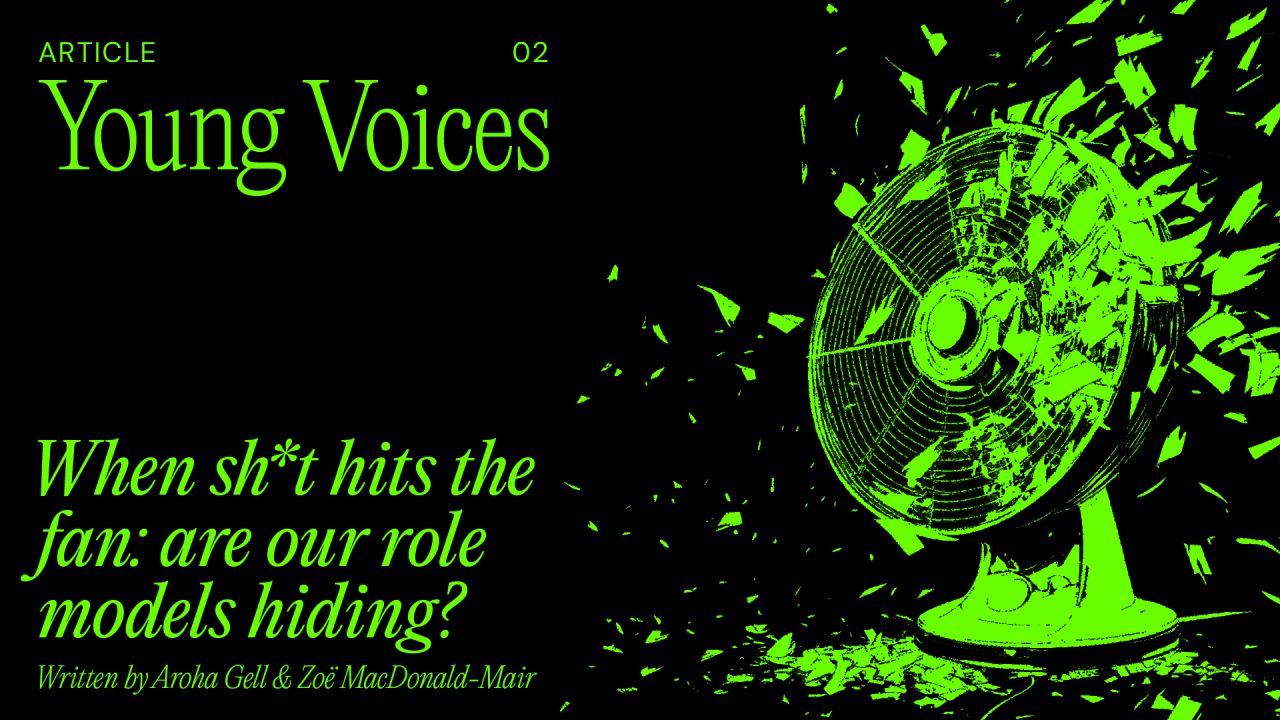When sh*t hits the fan: are our role models hiding?

Young Voices Article 02

The advertising industry is a chaotic mix of fun, growth, and exposure to brands that any marketer would dream of working with. But, with the fast pace comes reality. You don’t get to slow down and take note. You push forward boldly, at all times.
When you’re new to the industry, you’re running. Your imposter syndrome becomes a toxic ex, determined to plant doubt in your mind about how you’re performing. If you’re lucky, you’ll have an amazing leader to look up to – someone who can cut through your ex’s bullshit. But, if you’re different, and don’t have leaders or colleagues who see the world as you see it, and who think as unconventionally as you do, you hit a barrier: you cannot be what you cannot see.
Representation and diversity play a significant role in shaping the work we create, how we connect with audiences, and how we make our industry an inviting place for more perspectives. Taika Waititi said it best: “We need authentic narratives that truly represent different cultures.” After all, we’re in the business of effective communication.
The recent rollback of Diversity, Equity and Inclusion (DE&I) programmes across the USA is being felt throughout the world, with Google, Meta, NASA, Amazon and other global networks following suit.
This is a global issue, and on our side of the pond, we’re feeling the ripples too. The representation controversy with a certain ad industry publication last year; while on one hand could be accurate based on predetermined criteria, it reveals a consequence of the invisibility of anyone else who doesn’t fit the mould of a defined “success”. Or in this case, women.
It's fair to say things are pretty bleak right now.
So, we ask. Where have all the good role models gone?
Being the only one in a room who looks like you isn’t just an occasional experience; it can feel like BAU; like The Truman Show.
The honorable pressure to be the voice of your gender, sexuality, age, race, and disability creeps in. And even though you’re advocating for difference and ensuring your experiences are heard, it comes with the burden of having the ‘perfect experience’, untainted by the human condition. A burden that, unlike your colleagues, you take home.
Misaligning beliefs
When you do find someone to look up to, you can be met at times with other complexities. There’s no sugarcoating it – when someone you look up to has blind-spots and beliefs that don’t align with yours, it sucks.
Do they perpetuate industry ignorance that gives them recognition? Do they deem DE&I policies as bleh? Do they stay quiet when our industry removes rungs on the ladder?
In an age where transparency is crucial, discovering that someone you admire has significantly different beliefs– whether personal or professional – can be disheartening. Can you continue to look up to them, or does it undermine the foundation of that all-important inspiration.
It invokes the enduring question – can you separate art from the artist?
Hold your own
When you don’t have a role model who genuinely understands you, you might be forced to become your own. While this can be liberating, it comes with more questions than answers and can be destabilising in an industry where the ground is always shifting. The lack of a role model who ‘gets it’ means there’s an increased likelihood of making mistakes, with no soft landing that a leader would provide. It’s another barrier to overcome.
This is especially relevant when you get to a mid-level position and feel pressure to set an example and be ‘perfect’ whilst still figuring out your own path. What’s right for someone else may not be right for you.
Aroha, for example, is one of very few female indigenous Māori advertising strategists in New Zealand. She’s had to look elsewhere for role models. And, she’s also accepted that to have a role model is to become one.
It’s about finding your own path when there’s no roadmap; it’s about seeing a need and meeting that need.
The path forward: Redefining role models and representation
As the advertising industry progresses, it’s essential to redefine what role models are, and what they look like. To us, it’s clear. Role models should share power, call out bad industry practice, and set positive examples that inspire resilience, empathy, and leadership.
There isn’t a single perfect person for us to look up to. But you only need to look around the industry and beyond to find friends to lean on, bold work to be inspired by, and energy to keep you challenging the status quo. If you’re feeling how we’re feeling, know that you’re not alone in questioning what the heck is going on.
In an ever-changing industry, we can change ourselves too, and we can redefine the traits that make a great leader. Maybe this is crazy naïve, but whatever, we’re young.
Thanks for reading our secondArticle of Young Voices.
If you have a voice that should be heard, get in touch through Instagram or LinkedIn.
Article 02 was written by Aroha Gell ,Strategist at VML and Zoë MacDonald-Mair, Business Director, Quantum Jump
